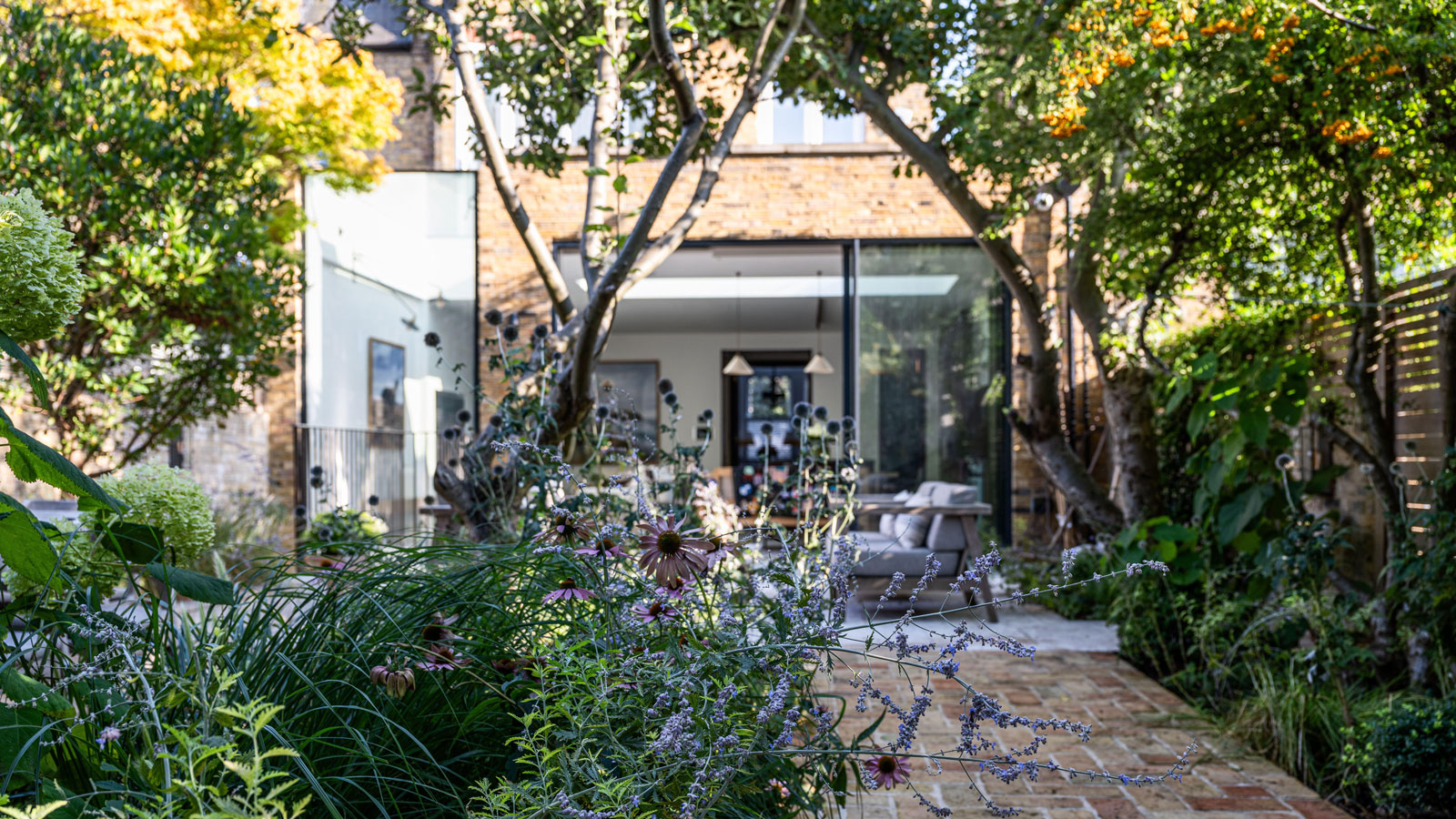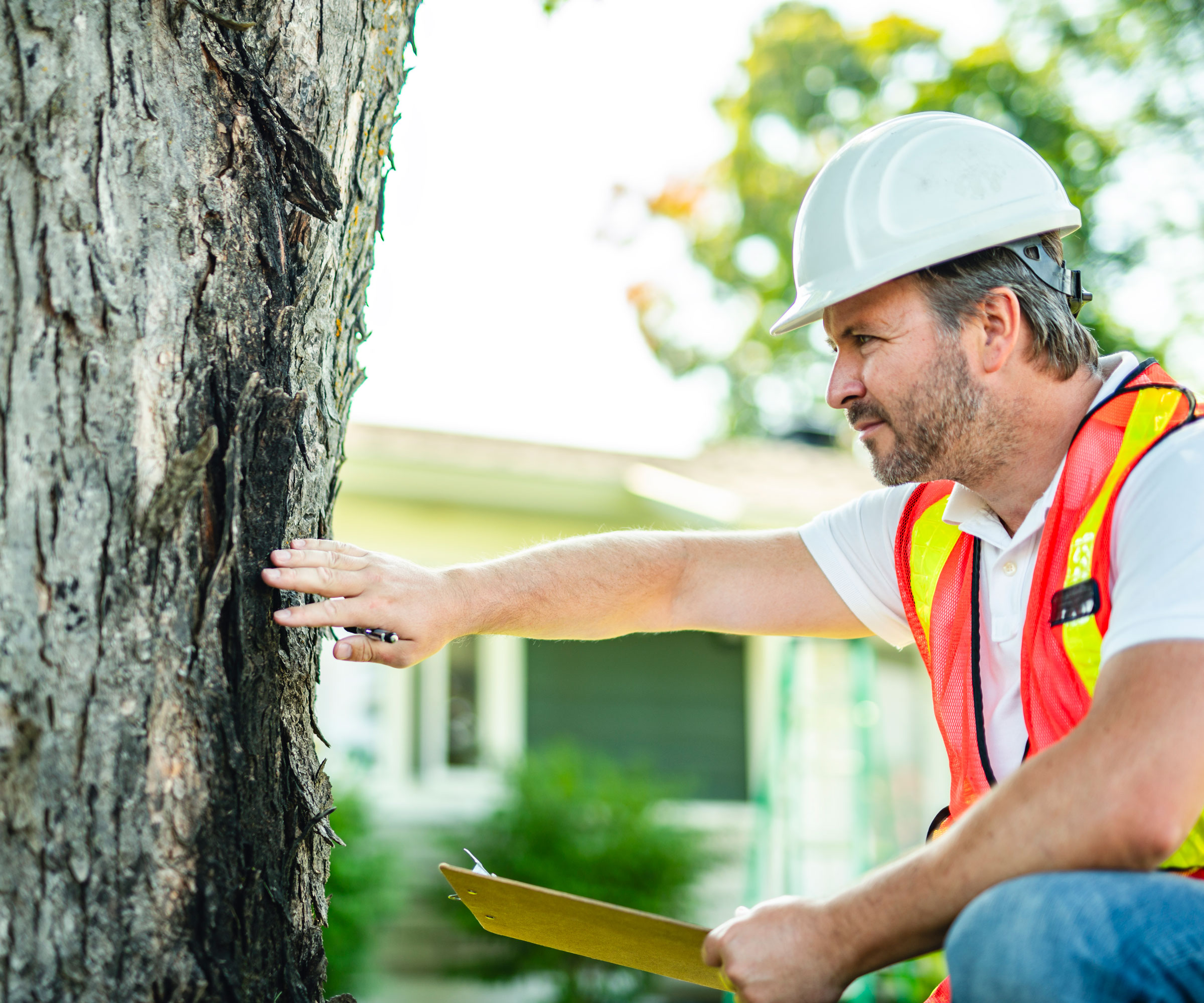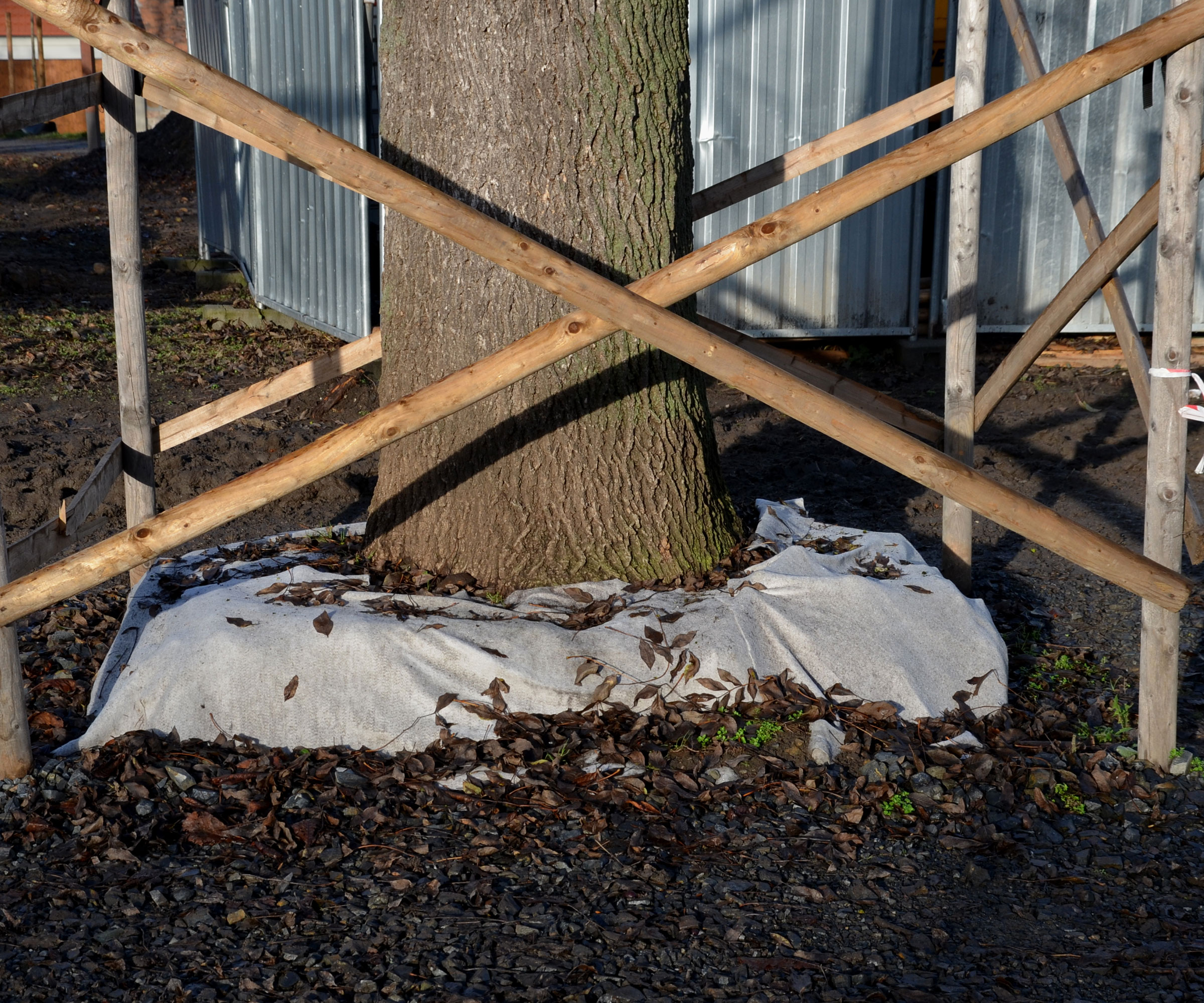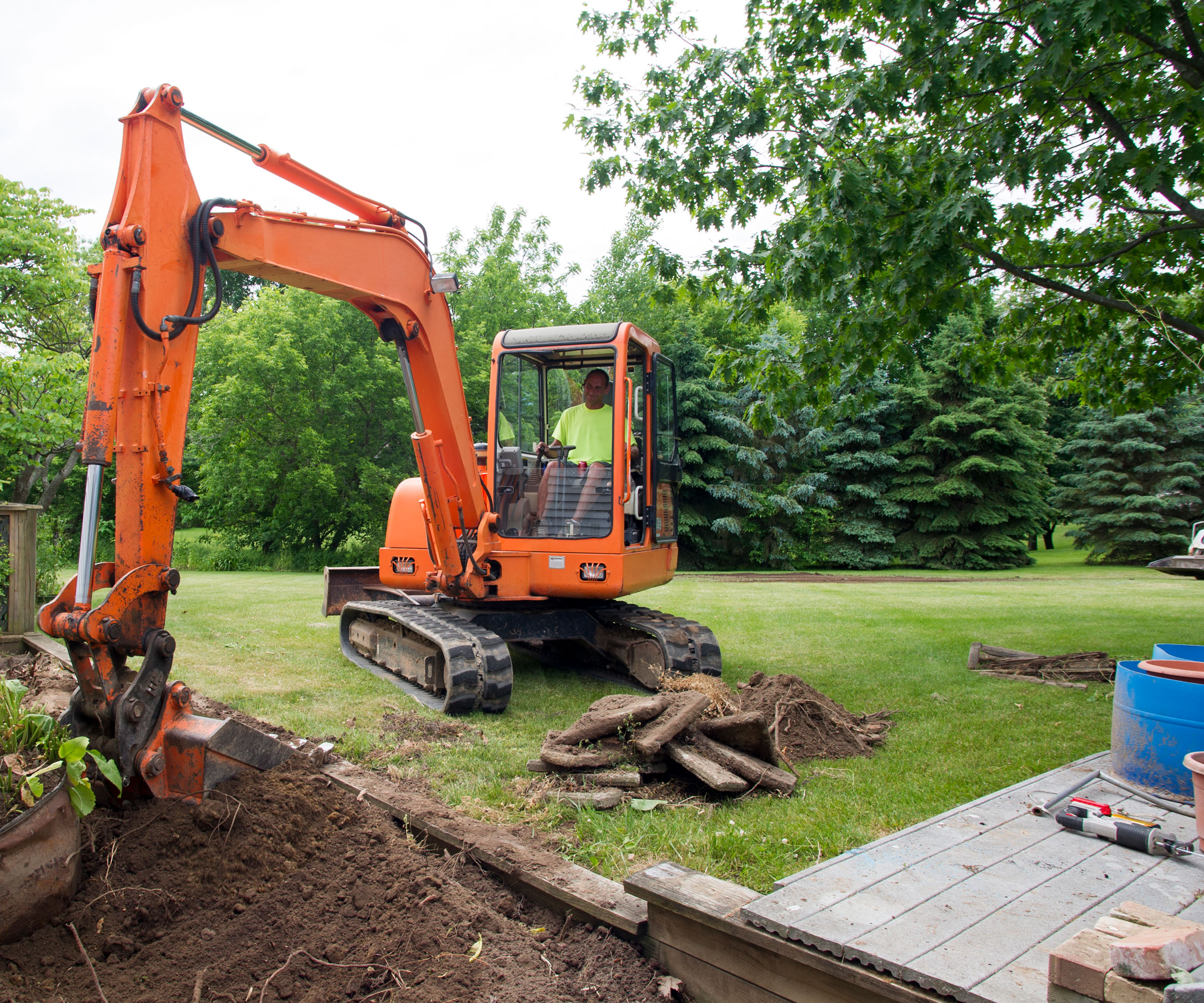How to protect trees during a build and keep one of your garden's most precious assets safe
Once you know how to protect trees during a build it's one less thing to worry about. Preventing tree damage when your home becomes a construction site is a matter of planning carefully and working closely with your contractor. It's worth knowing that if things go wrong you could be liable too.

If you're considering building work on your home then one of the first things you'll want to do is find out how to protect trees during a build. The presence of mature trees in your garden is probably one of the loveliest things about it, and you'll definitely want to protect them from any construction work going on in close proximity that might cause irreparable damage.
The main considerations are building equipment causing damage to the trunk and branches of trees, and the roots being severed during digging, even if the work is taking place at a distance – remember tree roots can spread a long way underground. Another issue is soil compaction caused by heavy equipment, which can lead to problems with tree health such as restricted root growth leading to tree loss.
Without the proper care, a lot can go wrong when construction takes place near trees. The good news there are easy ways to protect trees during a self-build. The key is to get appropriate protection in place before work commences, and make sure the plan is followed. Be vigilant and communicate regularly with building contractors to make sure they are not endangering your beautiful trees, and your build will proceed smoothly.
The importance of protecting trees during construction
"Construction activities pose multiple threats to trees," says Dean Meadows, Principal Arboriculturist and Tree Risk Management Lead at ecological and arboricultural consultancy Arbtech.
"Excavation within the tree’s rooting area severs structural and fine-feeding roots and compromises stability, water, and nutrient uptake. Heavy plant movements compact the soil, reducing pore space and suffocating roots. Meanwhile accidental impacts to trunks and branches open pathways for disease and decay."
Dean says that in his experience, failure to prioritise tree protection can lead to irreversible tree decline, and expose developers to costly remediation and reputational damage long after the build is completed. So it's well-worth including tree protection details in your extension planner to ensure the project goes smoothly.

Dean Meadows is a Principal Arboriculturist and Tree Risk Management Lead at Arbtech, with over 10 years of experience in arboriculture and tree risk management.
Legal and regulatory considerations

In the UK, tree protection is underpinned by a robust legislative and regulatory framework, and there can be costly penalties for anyone who undertakes unauthorised works. So it's important you are aware of the implications and find out how to protect trees during a build before work commences.
Bring your dream home to life with expert advice, how to guides and design inspiration. Sign up for our newsletter and get two free tickets to a Homebuilding & Renovating Show near you.
"The Development Act 1993 outlines tree-damaging activities such as removing a tree altogether, killing or severely harming a tree, lopping or cutting off major branches, ringbarking (removing a strip of bark around the trunk), topping, severing key parts like branches, limbs, or stems, and damaging the root system," explains Thomas Oldham, co-founder of UK Construction Blog. "Protecting trees means understanding these risks from the start and taking proactive steps to avoid them."
It's worth checking out advice about cutting down a tree too if you have a tree that is standing in the way of your build project.

Having worked in the engineering and construction industry for over a decade, Thomas Oldham has worked as lead engineer on a number of large scale projects for global clients such as Ford, Audi and Jaguar. He has spent the past four years using his expertise to develop the UK Construction Blog, a leading online platform dedicated to empowering individuals and businesses in the construction industry.
1. Tree protection orders
In the UK, many trees are protected by Tree Preservation Orders (TPOs) or by being located within Conservation Areas. Under the Town and Country Planning Act 1990, it’s illegal to cut down, prune, uproot, or cause intentional damage to protected trees without permission.
"Violating these protections can lead to fines of up to £20,000 per tree, or even unlimited fines if prosecuted in a Crown Court," says Thomas. "A TPO is issued by local councils to safeguard trees that offer significant value to the community. If a tree is protected by a TPO, you cannot cut, lop, top, uproot, or damage it in any way without formal consent."
TPOs can apply to any species of tree, and their primary purpose is to preserve the environmental, visual, and social benefits trees offer, especially when they are at risk from development.
"If you're planning work near a protected tree, you need to apply for permission before beginning," says Thomas. "The first step is to check with your local council to see whether the tree is covered by a TPO or falls within a Conservation Area. If it does, you'll need to submit an application outlining your proposed work, often with site plans, photographs, and sometimes an arboricultural report."
2. Tree protection plans
For trees within Conservation Areas, even minor work requires a six-week written notice. Councils typically decide within eight weeks, and you’ll need written approval before you proceed. If your project has tree-related planning conditions, you’ll be required to follow an approved Tree Protection Plan throughout construction.
"Most planning permissions where trees are on or next to the application site require supporting information demonstrating how trees will be protected during construction activity," explains Thomas.
"Where trees are likely to be impacted, an arboriculturist must be commissioned to undertake a tree survey. Often, the local planning authority will require an Arboricultural Impact Assessment (AIA), Tree Protection Plan, and an Arboricultural Method Statement (AMS), so it is imperative to review all requirements for planning documentation and instruct an arboriculturist early in the process to consult on feasibility."
Practical considerations to protect trees
If you own a tree you are legally responsible for ensuring it does not pose an unacceptable risk to people or property. Tree risk assessments undertaken by arboriculturists provide a way of managing this responsibility sensibly, so if in doubt ahead of a build one of the first things to do is consult an arborist for a professional assessment. Consult The Arboricultural Association to find a professional.
"Rather than removing trees unnecessarily, these assessments help identify trees with structural weaknesses or other issues that increase the likelihood of failure," says Dean. "They allow you to take reasonable, proportionate actions, such as pruning or monitoring, to keep the risks as low as reasonably practicable, while preserving the many benefits of trees."
One often overlooked but critical aspect of tree safety is the condition of the roots. It's important to determine the critical root zone (CRZ) of any trees near your build. The CRZ is the area around the trunk where most of the roots are located, and where disturbance can negatively impact the tree's stability and health.
"Roots do far more than simply feed and water a tree," explains Dean. "They are its primary anchor in the ground. If roots are damaged, perhaps due to nearby construction, heavy vehicles, changes in soil level, or even trenching for new services like water pipes, the tree's stability can be seriously compromised."
1. Pre-construction protection measures

Pre‐construction protective measures start with clearly respecting each tree’s Root Protection Area (RPA), ensuring that no retained specimen suffers damage severe enough to threaten its structural integrity or long‐term health.
"The RPA is often calculated as a circle centred on the trunk, with a radius equal to twelve times the tree’s trunk diameter measured 1.5m above ground," explains Dean. "Erecting sturdy welded‐mesh fencing around this defined area and equipping it with high‐visibility warning signs and exclusion‐zone notices creates a strict 'no‐go' area where storage, vehicle movements and material stockpiles are forbidden."
Where operational access or material transit must occur within a RPA, but installing permanent fencing is unworkable, appropriate ground boarding systems can be utilized to safeguard soil and roots.
"Ground boarding systems ensure loads are evenly dispersed and compaction is avoided," says Dean. "Boards should extend beyond the equipment’s wheelbase and be weighted or pinned to prevent movement, with infill of woodchip or clean angular aggregate between the boards to cushion impacts and maintain permeability."
Installed under the supervision of an arboriculturist, these temporary 'roadways' enable essential site operations to proceed without breaching the RPA, preserving critical root zones and ensuring the long‐term vitality of the retained trees.
Above ground, trunks and lower branches demand equal vigilance. Padding or guards fitted above ground level shield the bark of the trunk from mechanical impact, explains Dean. Pre-construction pruning can be deployed to facilitate safe working clearances, reducing the risk of accidental branch damage.
Shop tree protection
2. Post-construction care
Once construction is completed, monitoring is essential to safeguard both newly planted and retained trees, and to secure the health of trees going forward.
"For newly planted specimens, inspections throughout the first two growing seasons should assess root-ball stability, stake integrity and soil moisture levels," says Dean. "Any leaning or loose stakes must be corrected immediately, and irrigation regimes adjusted to maintain consistent soil moisture without waterlogging,"
Mulch levels around the root collar should be checked quarterly, ensuring a minimum 50mm depth of composted wood chip that remains clear of stem bark. "Spot-weeding or lightly aerating the soil with a fork can be carried out to prevent mulch compaction," explains Dean. "New growth rates, leaf colour, and the timing of bud burst and leaf fall provide early warnings of stress." It's a good idea to keep a record with dated photographs.
Retained mature trees also benefit from a tailored monitoring plan, according to Dean. "A best practice approach is to conduct assessments in spring, to check leaf-out and canopy density, and again in autumn, to detect die-back, and reveal any damage to the leaf canopy, or other signs of stress that may need to be remedied. At the same time, soil compaction tests can identify zones requiring remediation."
Working with contractors

The key to any self build is clear communication with on-site contractors, and this is crucial to successful tree protection too.
"Before any work begins, make sure all contractors, including builders, landscapers, and machine operators, know which trees are protected and what measures are in place to safeguard them," suggests Thomas. "Share detailed site plans that highlight protected trees, outline the specific restrictions, and walk through the site with contractors to point out protection zones."
Best practice is to include tree protection in the project’s method statements or site induction process so that it’s never overlooked. "Installing visible barriers, like sturdy fencing, around root zones before work starts, along with clear signage, helps make the restrictions clear," says Thomas. "Regular site inspections are also crucial, as is assigning a project manager or site supervisor to oversee tree protection. This ensures accountability and helps catch any potential issues early."
By treating tree protection as a critical part of the build, you help contractors take it seriously, avoid costly mistakes, and ensure your trees remain healthy long after the construction is complete.
Now you know how to protect trees during a build find out more with how to protect a garden during a build to safeguard your plants.

Lifestyle journalist Sarah Wilson writes about garden design and landscaping trends. She has studied introductory garden and landscape design, and also has an RHS Level 2 qualification in the Principles of Plant Growth and Development. Sarah is a regular contributor to Homes & Gardens and Livingetc, and has also written for Modern Gardens, Country Living, and Country Homes & Interiors magazines.



